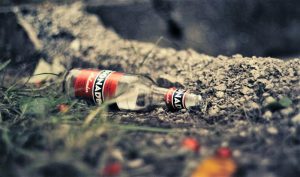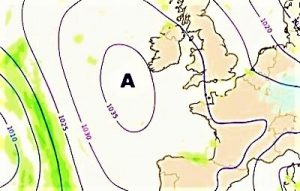Soil pollution
Soil pollution is a current problem with a great environmental impact on human, animal and plant health.

Related topics
Noise pollution, environmental pollution, atmospheric pollution, air pollution, water pollution, visual pollution, light pollution
What is soil pollution?
Soil pollution is when it contains an abnormal concentration of man-made chemical compounds that are potentially dangerous to the health of living beings and to the functioning of ecosystems.
Causes of soil pollution
- Industrialization: More and more, population growth requires the production of more goods, resulting in more industrial waste.
- Deforestation and soil erosion: Forests are home to more than 80% of terrestrial biodiversity and are a refuge for many animal and plant species. In this sense, deforestation is a catastrophe both for man and for other living beings. On the other hand, once a soil has become sterile and dry due to pollutants, it cannot become fertile again.
- Agricultural expansion: Modern intensive farms generally use chemical fertilizers and pesticides to kill insects, bacteria and fungi on crops. The problem is that many times these chemicals are applied in such proportions that they remain in the soil, modifying the acidity or pH of the soil.
- Nuclear waste: Nuclear power plants can generate a large amount of undesirable radioactive chemical substances that are likely to encounter the soil, altering its properties in a negative way.
- Mines: Mine waste usually generates a large amount of debris that can contain a wide variety of toxic substances that are then infiltrated into the soil by rain or are dispersed into the air by wind. This can obviously have a major impact on the regeneration of vegetation on site.
- Building materials: The construction activities carried out to urbanize cause much waste of wood materials, metal, plastic, among others.
- Deteriorated sewers: Older and poorly maintained sewers tend to cause leaks and escapes that cause pollution of the subsoil and groundwater. Corrosive agents can accelerate the process of sewerage deterioration.
Effects of soil pollution
Crops and vegetation in general can be affected by contaminated soils. Some chemical fertilizers and pesticides can be absorbed by the plants and animals we consume, so they would also affect our body’s health. This can affect the appearance of several types of cancer as well as other diseases.
Prevention of soil pollution
- The implementation of plans for the control and monitoring of pesticide residues.
- The consolidation of a system for monitoring the health status of populations in order to deepen knowledge of the effects on health.
- Management of polluted environments.
Sources
Soil can be contaminated by different types of toxic agents that alter its properties. Among them we can mention:
- Biological agents: these are substances that come from human and animal excrement.
- Agricultural activities: during these practices, toxic substances are used such as pesticides, fertilizers, debris, among others.
- Radioactive agents: these are toxic substances such as uranium and nitrogen.
- Urban waste: composed of garbage from domestic and commercial activities.
- Industrial waste: refers to waste from industrial installations such as steel, textiles, cement, glass, among others.
Examples of soil pollution
- Atomic testing: This type of testing can cause the soil to become completely infertile due to the presence of highly toxic radioactive materials.
- The dairy industry: Milk production activities ranging from cow rearing to ready-to-package can have a serious impact on soil nitrate contamination. This is the case in Brittany, Ireland and Italian Lombardy.
- Urban waste: An inefficient system for the treatment of urban waste can be a factor in soil pollution. It should be remembered that garbage can be a large amount of polluting waste such as metals, oils, acids, among others, which can alter the properties of dreams. This happens particularly in the case of uncontrolled landfills in the open air and without proper control. In addition, they are also an element of air pollution.
- Wastewater: Wastewater can infiltrate the soil, reaching the subsoil, thus constituting a major factor of biological contamination of the soil.
How to cite this article?
Briceño V., Gabriela. (2019). Soil pollution. Recovered on 3 January, 2025, de Euston96: https://www.euston96.com/en/soil-pollution/









